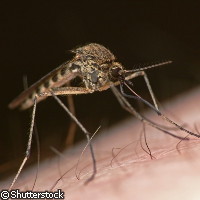EDEN project makes giant strides in vector-borne disease research
Despite diligent efforts to eliminate diseases transmitted by animals, questions still run rampant about how these diseases are in fact spread. Enter the EDEN ('Emerging diseases in a changing European environment') project, which received more than EUR 11 million to catalogue, understand, model and map the environmental, economic and societal factors that help these diseases to spread. Coordinated by the Centre de coopération internationale en recherche agronomique pour le développement (CIRAD) in France, EDEN is supported under the 'Sustainable development, global change and ecosystems' Thematic area of the Sixth Framework Programme (FP6). Pooling together the expertise of researchers from 49 public and private research institutes in 24 countries, the EDEN project sought to identify, evaluate and catalogue how global change is affecting Europe's ecosystems, particularly with regard to their role in supporting or slowing the spread of vector-borne diseases. According to EDEN leader Dr Renaud Lancelot of CIRAD, by adopting a coordinated European approach, the project is providing models to predict the emergence and spread of vector-borne diseases. These models include tools and scenarios for regional and global prevention, early warning, surveillance and. These advanced tools could have a significant impact on EU decision making and policy development, and national and international agencies would benefit immensely from their use. Among other things, the project partners found that climate change alone cannot be held entirely responsible for the rise in or emergence of vector-borne diseases in Europe. According to Dr Lancelot, the team's evaluation of cases of tick-borne encephalitis in central Europe and the Baltic countries revealed that socioeconomic factors, such as poverty, and human behaviour had a far greater impact on the risk of disease. 'We have seen that in the central and Baltic European countries, because of the collapse of the Soviet bloc, a lot of people suffered economically, losing their jobs with no resources,' euronews quoted Dr Lancelot as saying. 'So they started to go to the forest to pick mushrooms, blueberries, wild berries. This contact with nature introduced people to ticks and insects and rodents that could transmit certain diseases to humans.' However, the consortium discovered that a warmer climate could raise the risk of rodent-borne diseases like haemorrhagic fever with renal syndrome (Hantavirus infection) in Belgium and Fennoscandia (i.e. the part of northern Europe including Scandinavia and north-western Russia). The researchers found that while environment drivers, such as masting (a mass seeding phenomenon exhibited by some plant species) in deciduous forests in Belgium and the amount of snow cover in Fennoscandia, vary, human behaviour is the determinant factor for levels of disease risk. The EDEN team also found that the risk of a resurgence of malaria in the Mediterranean basin is very low. However, while climate change basically has no impact on the risk of malaria returning to these areas, the team discovered that agriculture and agricultural policies do affect this risk. But early detection and treatment of autochthonous (indigenous) cases plays a huge role in helping prevent malaria resurgence once the parasite is reintroduced into the area. Elsewhere, the project revealed that adult mosquitoes (Culex spp.) can ensure overwintering of the West Nile virus (WNV), which has been established in a number of European countries like Spain and Romania. In other words, the virus does not have to be introduced from Africa by migratory birds in order for WNV outbreaks to emerge. The EDEN partners contend that better understanding and improved risk quantification, as well as greater surveillance of WNV strains in both Europe and Africa, could be pivotal for preventing or alleviating extensive WNV epidemics. The researchers also made significant headway in integrating low- and high-resolution satellite imagery, said Dr Lancelot, as well as statistical and mathematical modelling for the development of quantitative and prediction models for the installation of vector-borne diseases. 'The method was firstly used to establish a predictive model for the emergence of canine leishmaniasis in southern France,' Dr Lancelot noted. 'This model can account for both local and global changes, and may be extended to other vector-borne diseases in the future,' he added. 'When we understand what happens locally in different parts of Europe, and other environmental causes of the disease patterns, then we can make predictive models and we can make risk assessments to help people to avoid the diseases,' explained Professor Heikki Henttonen of the Finnish Forest Research Institute, an EDEN partner. In just over 5 years, the project has also succeeded in supporting 60 students via PhD meetings, workshops and training courses, giving them the means to share common methods and tools, and review how environmental changes affect vector-borne diseases. It should be noted that since April 2010 more than 200 scientific publications in peer-reviewed journals have been approved by the steering committee. The results obtained by the project will also be used by global public health agencies including the European Centre for Disease Prevention and Control (ECDC). EDEN held an international conference on the effect of environment changes on the emergence of vector-borne diseases in Montpellier, France on 10-12 May. The project results were also presented at the conference.
Countries
France



